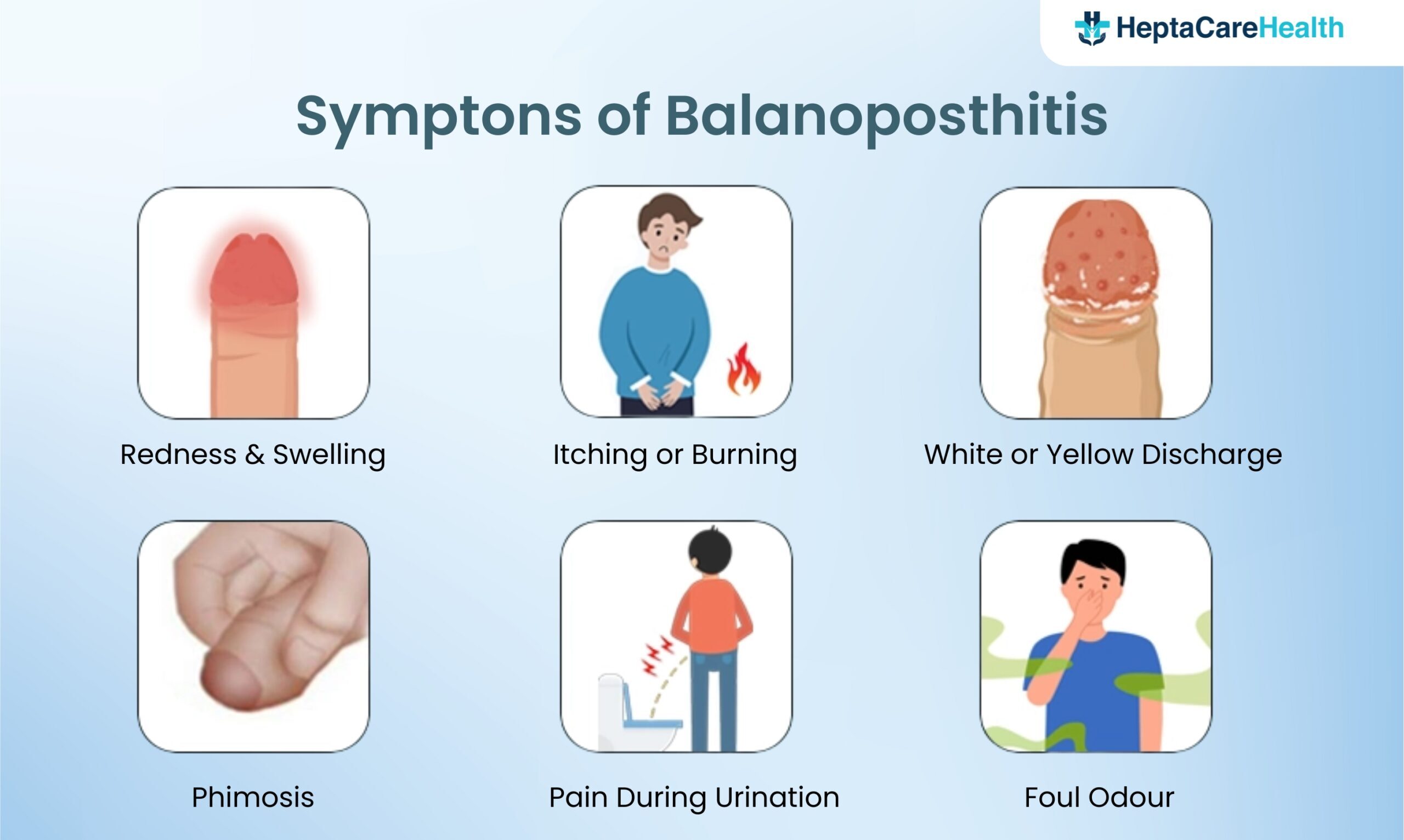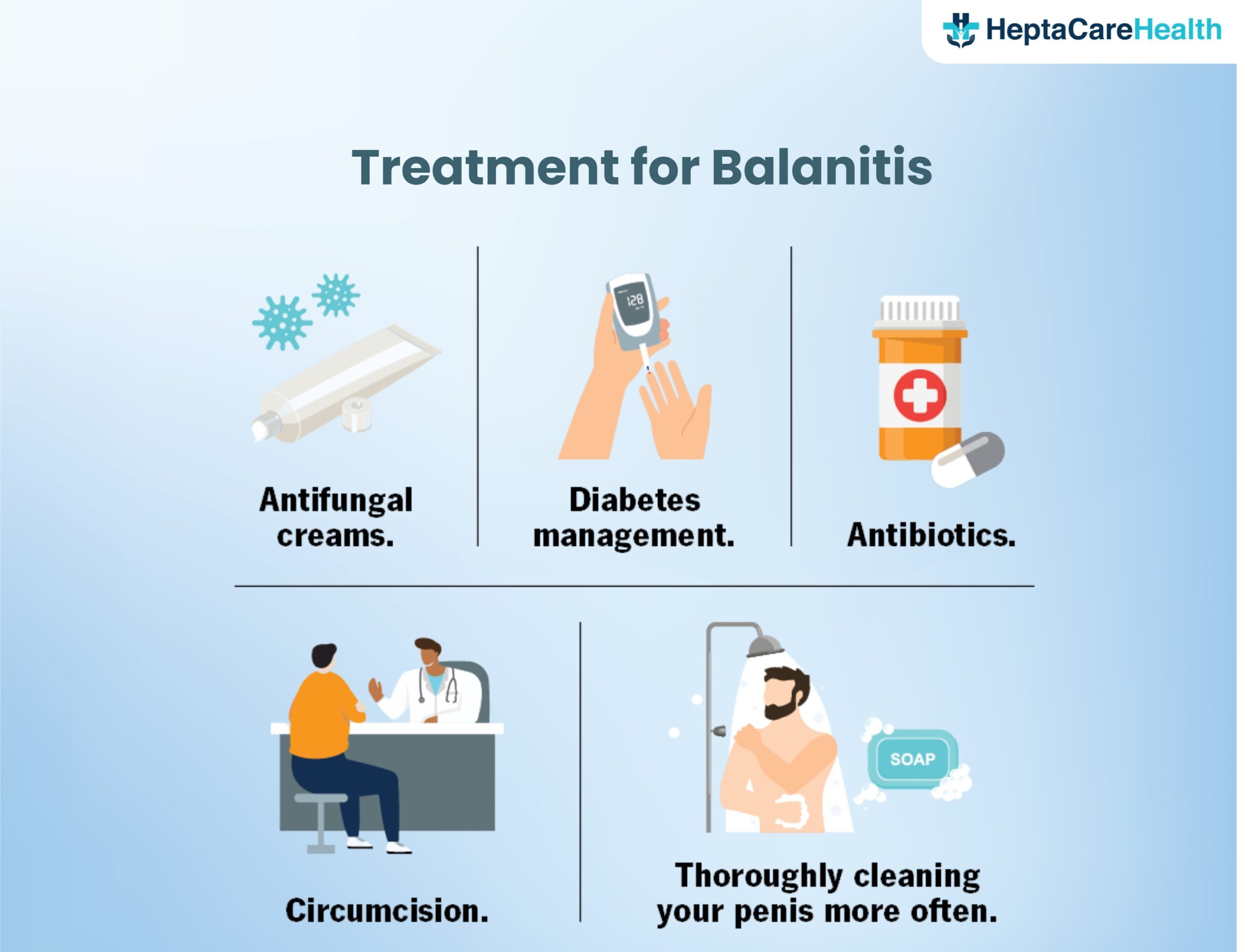Balanoposthitis is a painful urological condition that affects partially circumcised or completely uncircumcised men. Men often refrain from talking about it as it is an intimate issue. However, this condition can cause some severe complications if left untreated for a long time. Read on to learn all about Balanoposthitis.
Happy Patients
Disease
Hospitals
Cities
Balanoposthitis is a disease of the male genitalia that involves inflammation of the foreskin and glans in uncircumcised men. Generally, it does not require treatment and gets better on its own. However, in some cases, medical intervention becomes a must.
The condition is quite discomforting and has no single cause. It is common in uncircumcised and partially circumcised men. This condition is generabecomeslly curable by medical intervention and requires circumcision surgery only when the condition gets severe.

The causes of Balanoposthitis are multiple and may vary for each individual. In all Balanoposthitis cases, the doctors identify the condition’s cause before suggesting treatment. The leading causes of this condition generally include:-
Balanoposthitis Symptoms include:
It is a typically diagnosed with the help of a physical exam. During this exam, the urologist will examine your penis and ask you questions about the symptoms you’re experiencing. Based on the physical exam findings, the doctor might suggest other tests.
The doctors perform a swab test to collect samples from the head or foreskin of the penis and examine them under a microscope. They may also suggest a blood test or biopsy to rule out other complications.
Balanoposthitis can be quite painful and may worsen if it’s left untreated. Consult a doctor for this condition if you:
Typically, Balanoposthitis goes away on its own without treatment. However, in the rest of the cases, it can cause alarming symptoms and may worsen if left untreated. Listed below are some complications that might occur if you leave Balanoposthitis untreated:
Balanoposthitis exhibits different symptoms in each individual. The treatment extended for this condition is based on the seriousness of the condition. In most cases, non-surgical methods offer fruitful results, especially when the disease is in its initial stages. So, on that note, listed below are some standard non-surgical treatment methods for Balanoposthitis:
In chronic or recurrent cases of Balanoposthitis, surgery becomes requisite. Circumcision is a common surgical procedure for balanoposthitis treatment and other common diseases like balanitis treatment, phimosis treatment, paraphimosis treatment, and foreskin infection treatments. Circumcision is usually performed by the following methods- laser circumcision, stapler circumcision, and open circumcision., which involves the removal of the foreskin covering the head of the penis (glans). This surgery is generally performed using the following methods:
Circumcision surgery is generally quite safe and seamless. However, all individuals undergoing this surgery should know its potential risks and complications. We have listed below the complications that might occur during or after a circumcision surgery:
At HeptaCare Health we treat various foreskin issues by laser circumcision, stapler circumcision and frenuloplasty surgery.

Recurrent balanoposthitis is a condition characterized by repeated episodes of inflammation affecting both the glans penis (balanitis) and the foreskin (posthitis). This condition can cause significant discomfort and complications if not properly managed.
Recurrent balanoposthitis can result from various factors, including:
Recurrent balanoposthitis can be prevented by:
Complications
If left untreated, recurrent balanoposthitis can lead to several complications, including:
Doctors suggest circumcision surgery for balanoposthitis when non-surgical methods fail to offer respite. Such cases are counted under medical emergencies and covered under insurance. At HeptaCare Health, we offer complete insurance assistance. You can get in touch with our dedicated insurance team to get clarity on insurance coverage for Balanoposthitis.


Based on 7721 Recommendations | Rated 4.68 Out of 5
Happy Patients
Clinics
Cities
Surgeries
Doctors
Hospitals

Painless laser circumcision at Heptacare Health with quick recovery and expert care.

Safe circumcision at Heptacare Health, offering precise, minimally invasive treatment with faster recovery.

Effective phimosis treatment at HeptaCare Health with expert care for safe and long-lasting results.

Expert balanoposthitis treatment at HeptaCare Health for safe, effective, and quick recovery care.

Safe hydrocele treatment at Heptacare Health with expert care and minimally invasive procedures for faster recovery.

Yes, circumcision is safe for newborns, children, and adults, but the method and anesthesia vary according to age.
Minor risks include swelling, mild pain, bleeding, or infection, which are rare and manageable with proper care.
No. Circumcision does not affect sexual performance or sensation significantly. Many patients report improved hygiene and reduced infections.
While circumcision can be elective, it is recommended for medical conditions like phimosis, recurrent infections, or hygiene issues.
● piles laser surgery cost in Vizag ● low-cost piles surgery in Hyderabad ● cashless piles treatment near me ● painless piles surgery in Vijayawada ● piles treatment with insurance in Vizag ● piles removal surgery cost in Hyderabad ● piles operation packages in Vijayawada ● affordable piles treatment near me ● piles laser treatment clinic in Hyderabad ● piles doctor consultation charges in Vizag ● best piles surgery cost in Vijayawada ● piles treatment hospital near me ● piles laser operation price in Hyderabad ● low-cost piles laser treatment in Vizag ● piles removal cost near me ● piles treatment with EMI in Vijayawada ● piles surgery specialist near me ● piles surgery packages in Hyderabad ● piles treatment clinic near me ● stapler circumcision treatment near me ● stapler circumcision surgery cost in Vizag ● painless stapler circumcision in Hyderabad ● stapler circumcision for adults near me ● best stapler circumcision clinic in Vijayawada ● stapler circumcision procedure cost in Hyderabad ● stapler circumcision surgery packages near me ● stapler circumcision treatment hospital in Vizag ● affordable stapler circumcision surgery near me ● stapler circumcision consultation charges in Hyderabad ● stapler circumcision surgery with EMI option ● advanced stapler circumcision surgery near me
Disclaimer: **The result and experience may vary from patient to patient.. ***By submitting the form or calling, you agree to receive important updates and marketing communications.
Getting an accurate diagnosis can be one of the most impactful experiences that you can have.

cure with care
Copyright © 2025. All rights reserved.
Consult with our expert surgeon for more than 50+ diseases
Happy Patients
Hospitals
Cities